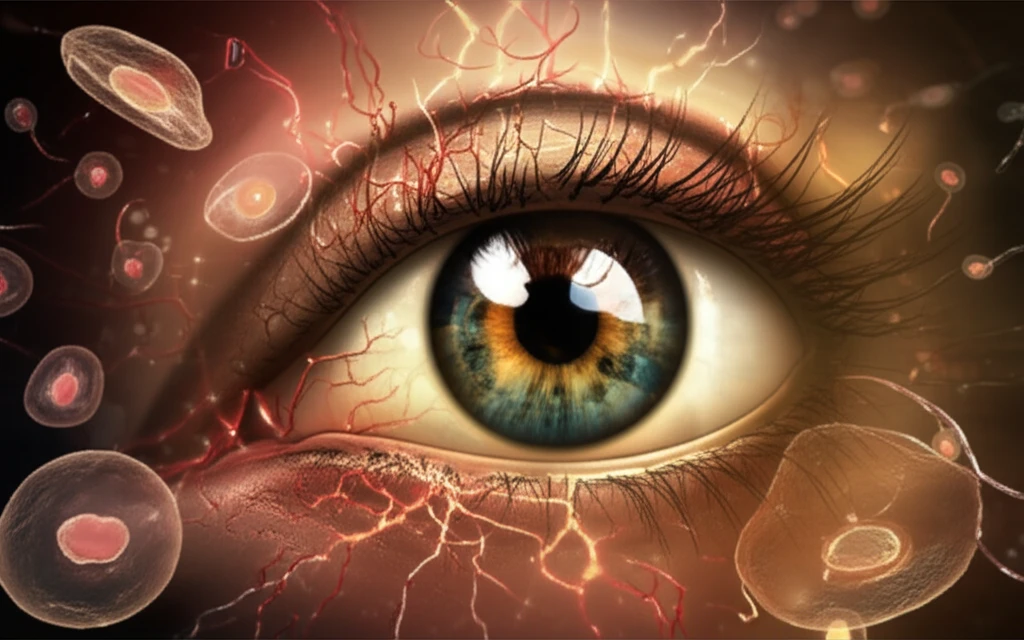
Diabetes Breakthrough: Can Stem Cells Reverse Retinal Damage?
"New research explores how adipose stem cells and their paracrine factors offer hope for treating early diabetic retinopathy, potentially preventing vision loss."
Diabetic retinopathy (DR), a common complication of diabetes, threatens the vision of millions worldwide. In its early stages, DR is characterized by neurovascular defects that, if left unaddressed, can lead to severe vision impairment and blindness.
Current treatments primarily target the advanced stages of DR, such as diabetic macular edema (DME) and proliferative DR (PDR), often after significant and irreversible vision loss has already occurred. This creates a critical need for therapies that can intervene earlier in the disease process, halting or reversing its progression before it reaches these advanced stages.
Exciting new research is exploring the potential of adipose-derived stem cells (ASCs) and their paracrine factors to therapeutically rescue early-stage DR features. This article dives into a groundbreaking study that investigates how ASCs, particularly those positive for the pericyte marker CD140b, and their secreted factors can combat the neurovascular defects characteristic of early DR.
Stem Cells to the Rescue: How ASCs Protect the Retina

The study, published in Stem Cell Research & Therapy, focused on using human ASCs to treat early DR in a mouse model (Ins2Akita). Researchers hypothesized that ASCs, known for their regenerative properties, could protect and restore the delicate neurovascular structures of the retina. These cells can be easily obtained, and are considered multi potent, with ability to treat a range of degenerative conditions.
- ASC Transplantation: Direct intravitreal injections of CD140b-positive ASCs into the eyes of the mice.
- Paracrine Factor Delivery: Intravitreal injections of conditioned media (ASC-CM) from cytokine-primed ASCs, essentially delivering the healing factors secreted by the cells.
A Promising Future for Stem Cell Therapies in Diabetic Retinopathy
This research paves the way for further investigation into stem cell-based therapies for DR. While challenges remain, including optimizing delivery methods and ensuring long-term safety and efficacy, the potential of ASCs and their paracrine factors to prevent vision loss in diabetes is a beacon of hope for millions at risk. As studies continue, we may be on the cusp of a new era in DR treatment, shifting from managing late-stage complications to proactively protecting and restoring retinal health.
